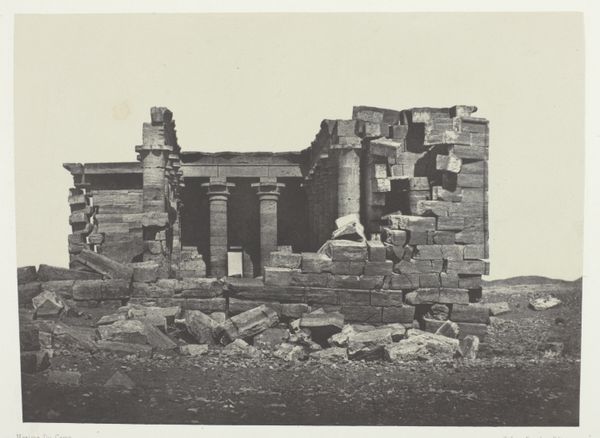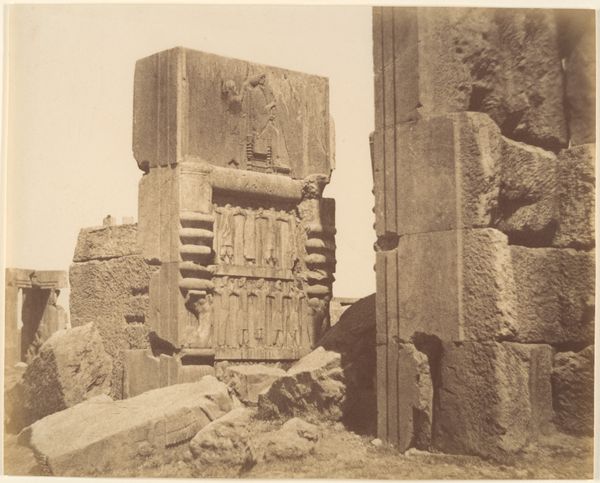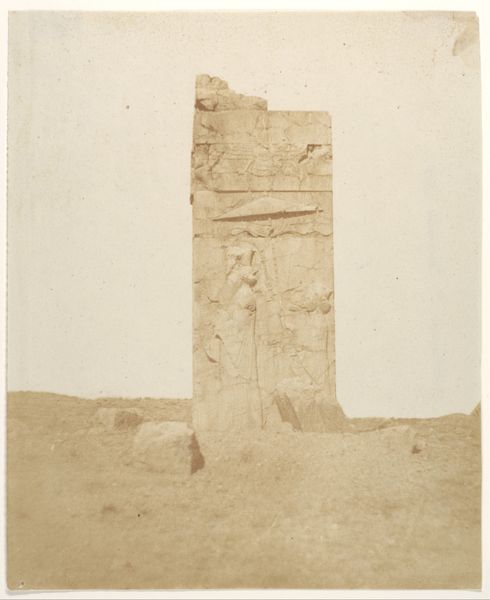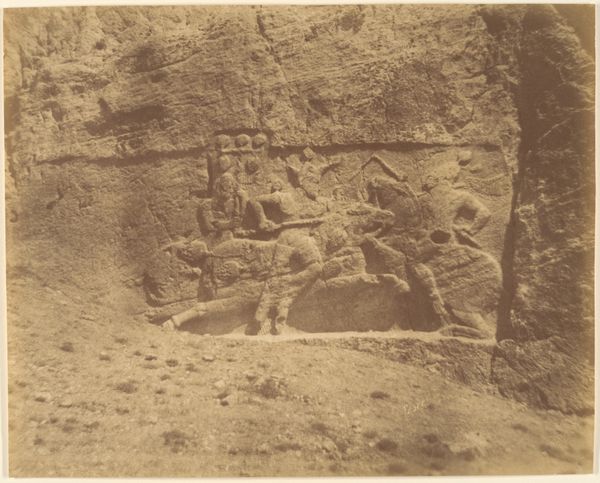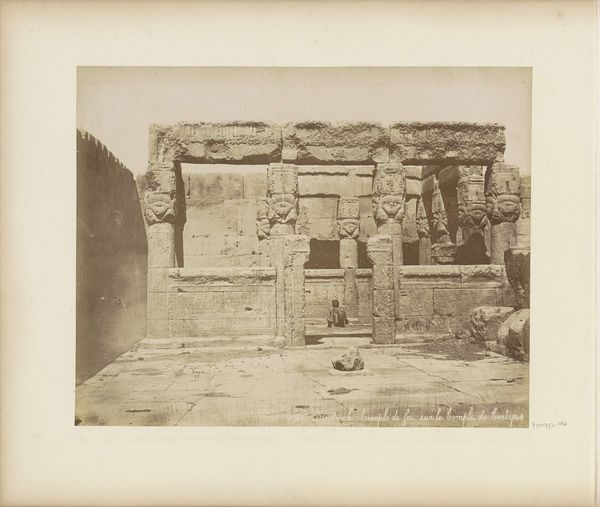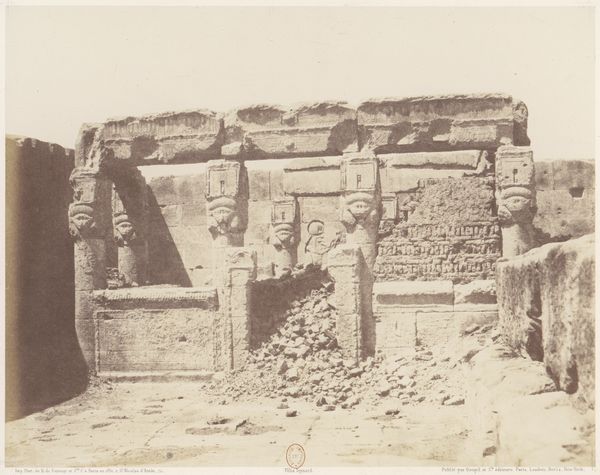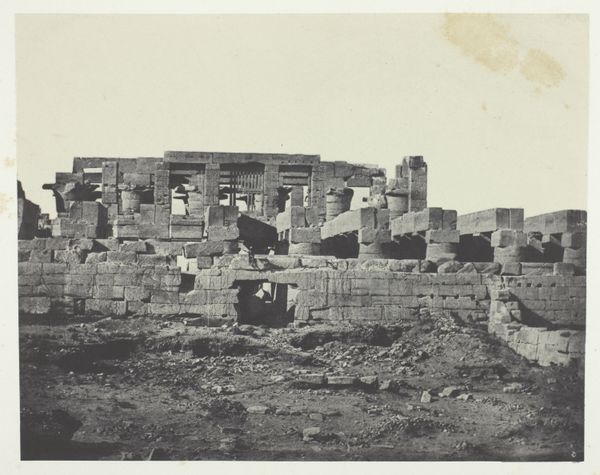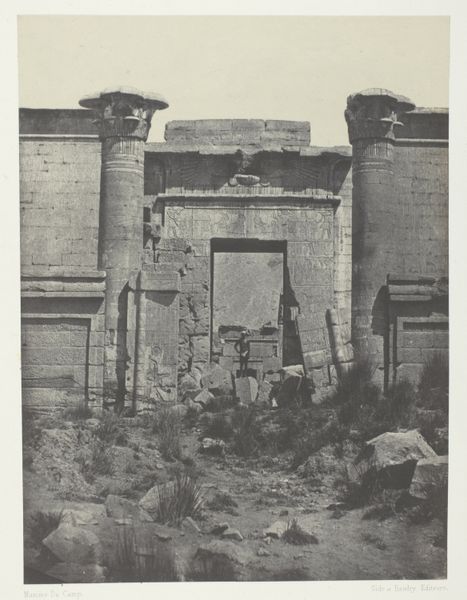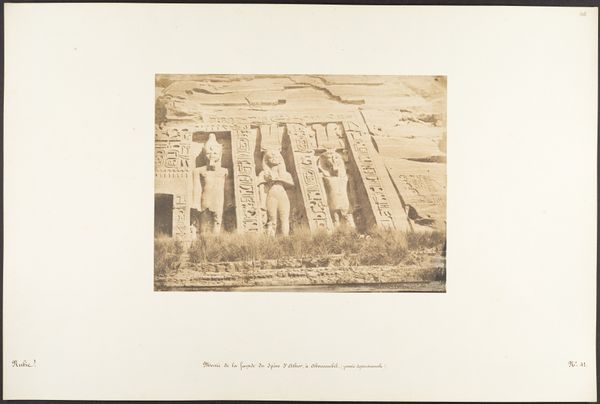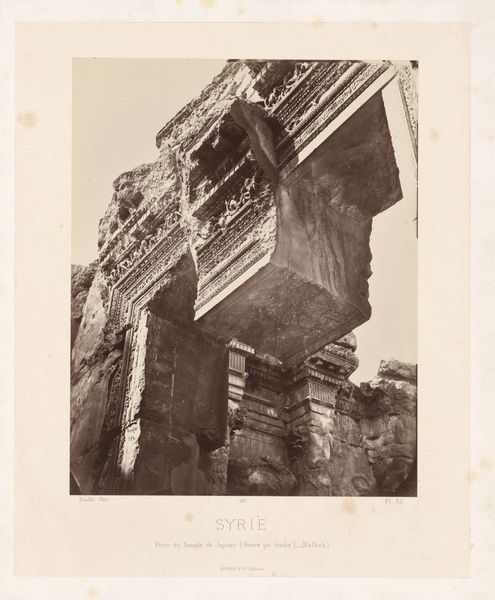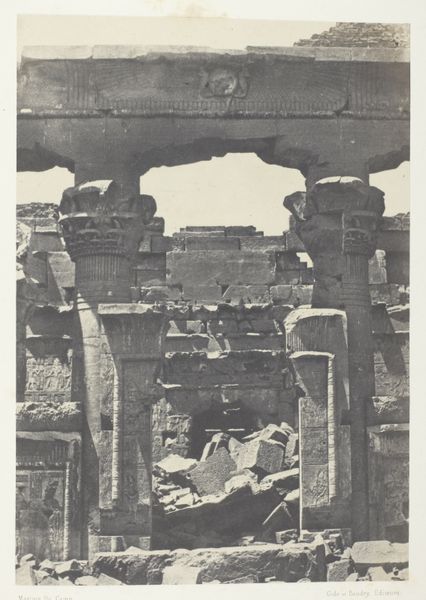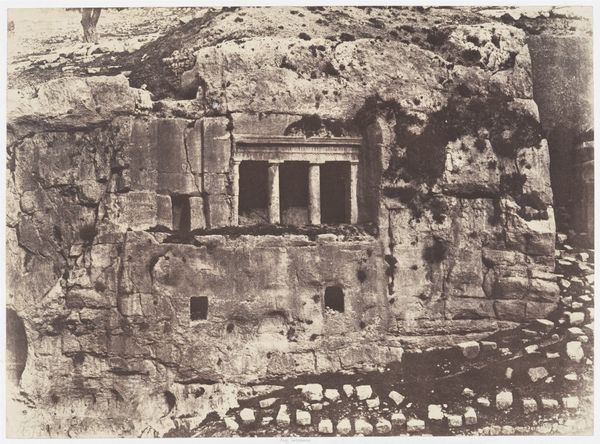
print, photography
#
water colours
# print
#
landscape
#
photography
#
ancient-mediterranean
Copyright: Public Domain
Luigi Pesce captured "Tomba sulla rocca a Persepolis" with photography during the 19th century, a period marked by burgeoning European interest in archaeological sites across the Middle East. This image presents the tomb carved into the rock at Persepolis, a city that once stood as a symbol of Persian imperial power. Pesce's photograph is not merely a documentation of an ancient site; it’s an intersection of histories. It reflects the European gaze upon non-Western cultures and the dynamic between observer and observed. Consider the role of photography itself during this era. It served as a tool of exploration, documentation, and, at times, of colonial authority. Pesce's work captures the visual language through which the West came to understand and represent the East. While the tomb speaks of ancient rulers and their legacies, Pesce's photograph invites us to reflect on the shifting sands of time, power, and representation. How do we, as viewers today, interpret these images from the past, recognizing the complex layers of history and identity they contain?
Comments
No comments
Be the first to comment and join the conversation on the ultimate creative platform.

